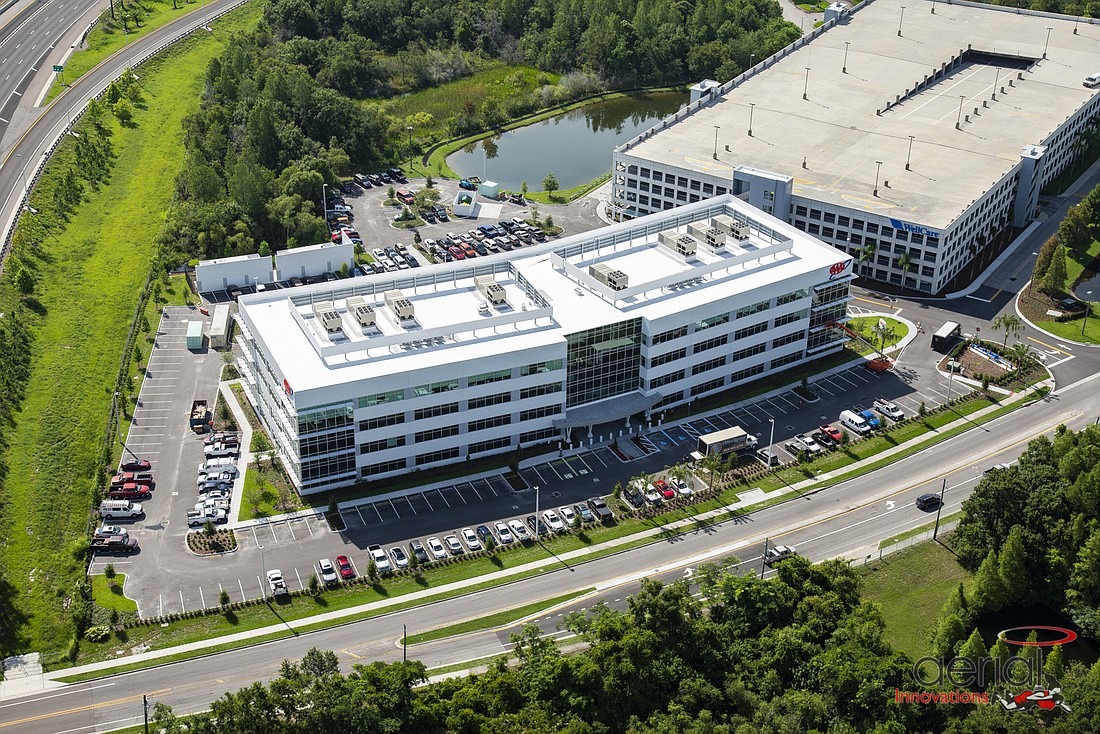- January 16, 2025
-
-
Loading

Loading

Tampa Bay’s annual office rental rate growth is among the largest in the nation, according to a new statistical analysis by commercial real estate research firm CoStar Group.
Over the past 12 months, Tampa Bay’s 5.5% gain in asking office rent rakes the region seventh among all U.S. markets, CoStar notes.
But thanks to a lack of new supply and steady white-collar job growth, Tampa Bay’s office market has notched a number of superlatives over the past few years.
Since 2015, Tampa Bay has consistently ranked among the biggest gainers in office rent hikes, outpacing the national average by more than two times in each of the previous four years, or roughly 5% annually.
“What I find striking about this is the fact that it isn’t simply a one-time event,” says Will Bertolero, a director with New Jersey-based Vision Properties, owner of the six-building Renaissance Center office campus in Northwest Tampa.
“If you look back over the previous four-plus years, Tampa’s office-user payroll numbers have continued to outperform all of Florida in terms of gains.”
Bertolero notes that an influx of major companies such as Bristol Myers Squibb, Johnson & Johnson, Amgen and others — coupled with professional service and other organic growth — has largely fueled Tampa’s gains.
Vision Properties is currently constructing a seventh office building containing 150,000 square feet within the 71-acre Renaissance business park, and it has designs for an eighth, which would contain 250,000 square feet.
Its last 150,000-square-foot offering, which it began on a speculative basis in 2017, was fully leased by AAA before construction was completed.
“It’s a question of when, not if,” Bertolero says of Renaissance VIII. “You look at the fundamentals of the area office market and it just makes a lot of sense.”
In both Renaissance VIII and VIII, Vision will be seeking gross rents of roughly $40 per square foot.
Of the various submarkets that comprise the Tampa Bay region, the suburban Westshore Business District near the Tampa International Airport and the International Plaza Mall has posted the best performance over the past year, with gains of 7.5%.
Downtown Tampa, meanwhile, has recorded impressive rent gains of 7.1%, CoStar notes, while the South Tampa submarket had rental rate growth of 6.9%.
Even the “worst” performer in the region, the South Pinellas submarket, had rental rate growth of 3.6% over the past year — topping the national average of 2.6%.
The same was true for Pinellas County’s other two primary submarkets — downtown St. Petersburg and the Gateway section of the county. There, St. Petersburg had a 4.4% growth rate in rents, while the Gateway suburban submarket posted an average gain of 5.2%.
Much of the gains can be attributed to the Tampa Bay’s low vacancy rate of 7.5%, which CoStar says is the lowest it has ever recorded for the area.
But new construction could push that figure up considerably in the years to come. Some two million square feet of new office space is underway, at Metropolitan Life’s MetWest III building and others.
By most estimates, more than 1.2 million square feet of new space also will be coming to market by 2022, though a significant portion is crystallized around Water Street Tampa, the $3 billion, 53-acre mixed-use neighborhood being developed downtown.
Although that represents more new inventory than at any time in the past decade, Bertolero says much of that new space has been pre-leased and represents only a small percentage of the overall existing market.
“The new space represents just 3% of the existing 40 million-square-foot market,” he says. “I don’t think that’s a bad thing. I think you’ll continue to see rent rate growth.”
CoStar also notes that Tampa Bay isn’t generating as much building as in other markets nationwide, despite its job growth.